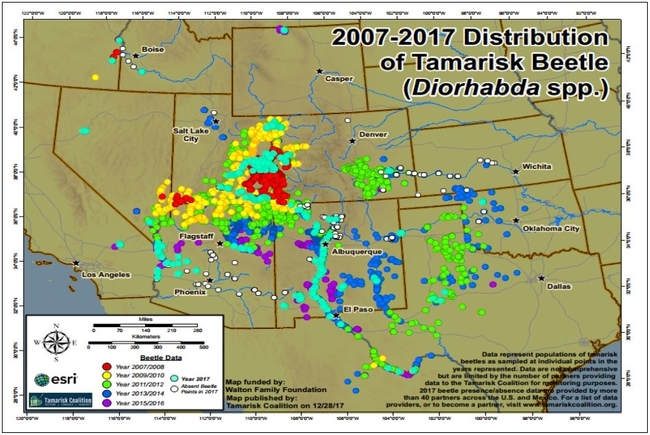Heat is something that many Californians are used to, and live with for several months out of the year, but prolonged triple digit heat is not something I am used to in my corner of the state. Sure it gets hot up here in Lassen County, but there is most often a place to retreat from the heat.
A couple of weeks ago I was feeling hot, sweltering in the triple digits of Canyonlands National Park in Utah, which in all honesty would be considered a moderate day for my colleagues down in the Imperial Valley. But, I live in northern California, and what I was seeing made me think I was hallucinating from the heat. I did a double take because a good portion of the vegetation surrounding the river was turning brown and dropping their leafs, with some stems appearing completely dead! Being a weed scientist, dead plants are exciting, and I wanted to know what was going on!
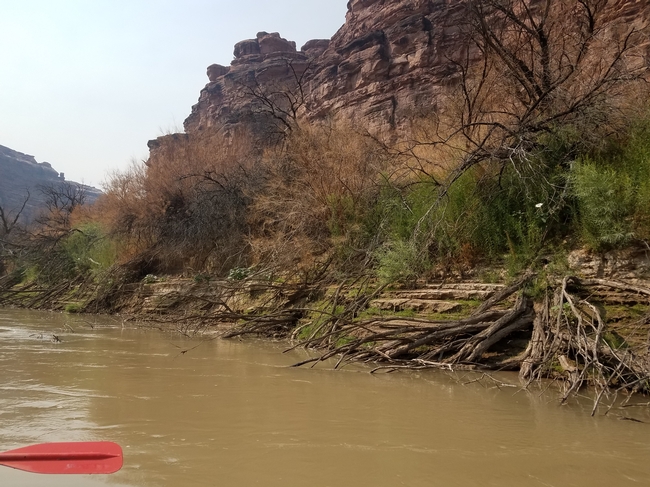
To take a step back, I was on summer vacation on a six-day canoe trip through Stillwater Canyon on the Green River in Canyonlands to celebrate a friend's wedding. This was my second time on the river, which winds through a breathtaking landscape. When I visited two years ago, I saw first hand the infestation of tamarisk which had invaded the riparian corridor. In places the tamarisk was intermixed with willows and cottonwoods, where in other sections it completely dominated the banks. Tamarisk was everywhere, with its feather-like foliage swaying in the wind. This tree, which is native to Eurasia, was introduced to North America in the 1800's, available for sale as a windbreak/nursery species in California as early as 1856. A very drought-tolerant and salt-tolerant plant, it escaped, finding and filling a niche in riparian corridors controlled by dams in the western United States.
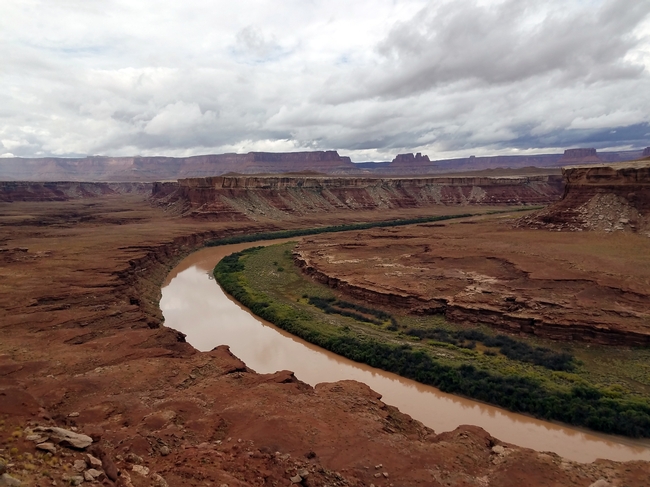
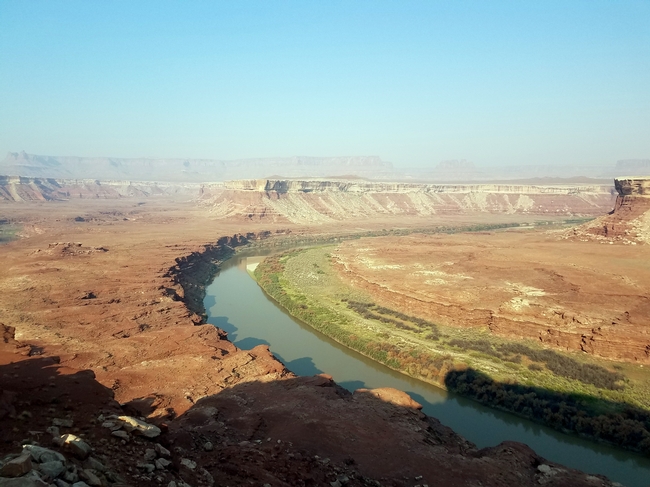
If you hadn't already guessed, the dead/defoliated trees I was seeing on the banks of the Green River were tamarisk. Which is why I was excited, who doesn't love dead weeds! What was even more exciting was that the willows intermixed along the river bank looked completely healthy. While we floated along, I continued to ponder what might be happening. The landscape was harsh, and access besides the river was nonexistent down in the depths of the canyon. There did not appear to be any active, mechanical or chemical control occurring in the remote landscape of the park.
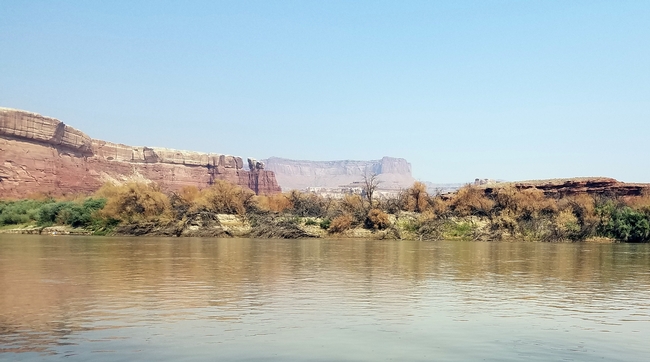
And then, as the day grew longer, it hit me, literally they hit me right in the face! Little yellow flying beetles on my face, in my hair, and crawling on my arms. Numerous in numbers to say the least, these yellow beetles were everywhere flying through the air! I had heard of the tamarisk beetles which had been released as a biocontrol, but I had never observed them at work. Could these little buggers be responsible for the dead/dying tamarisk trees on the bank?
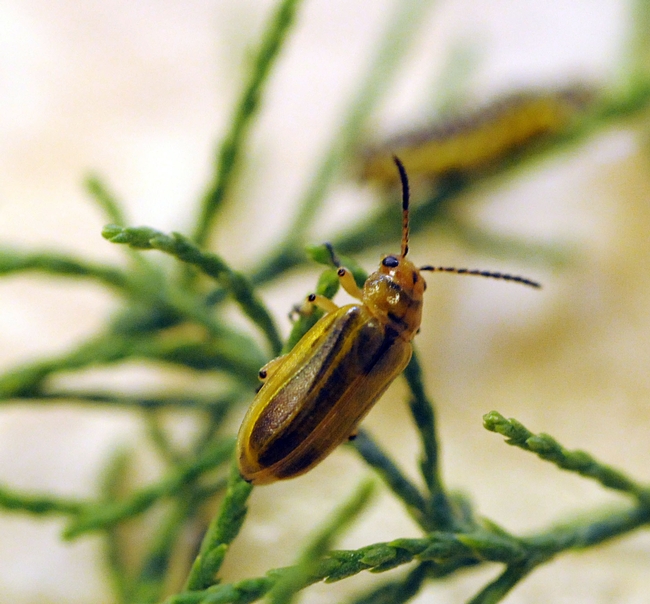
Days later after the jet boat ride back up the Colorado River to Moab, I hit cell service. My first inquiry was to confirm my suspicions: was the little yellow beetle the biocontrol insect I had heard about? Looking at pictures, it certainly appeared so! I have no doubt that we had been seeing one of the species of Diorhabda (tamarisk beetle) which had been munching, making short work of tamarisk foliage along the riverbank.
Looking into it more, there are multiple species of Diorhabda which have been released in North America. The beetles feed exclusively on tamarisk foliage, and have the ability to cause the major defoliation events my friends and I witnessed from our canoes. After multiple years of heavy defoliation, tamarisk trees may die and their populations can be reduced. Releases were initially made in many westerns states throughout the early 2000's. I had heard secondhand about this biocontrol success, however, this was my first time seeing the defoliation in action. Below is a map form last years mapping efforts indicating where the beetles have been located.
As I continued to read about the tamarisk beetle, it appeared that not all was well. The southwestern willow flycatcher is an endangered bird, which is dependent on the riparian corridors of the arid west. As willow trees have become displaced by tamarisk, the willow flycatcher has shifted its habitat, and has been found nesting and feeding in tamarisk stands. It is thought to be dependent on tamarisk for the riparian structure once offered by willows, in parts of its breeding habitat. When initial releases occurred, tamarisk beetles where not allowed to be released within 200 miles of established willow flycatcher habitat.
When the tamarisk biocontrol beetle was evaluated for release, initial testing indicated it would only be able to survive and reproduce in latitudes above 38 degrees north. In lower latitudes, daylength cues would come too quickly for the insects to enter diapause, and successful overwintering to occur. As most of the willow flycatcher habitat fell below the latitude line, the buffer in space between release sites, along with the beetle's adaptation to northern latitudes, was supposed to protect the birds' habitat. In the years following the release, Dan Bean from the Colorado Department of Ag found that the beetle had become adapted to daylength cues at lower latitudes, and was able to successfully overwinter in areas previously thought to be unsuitable habitat.
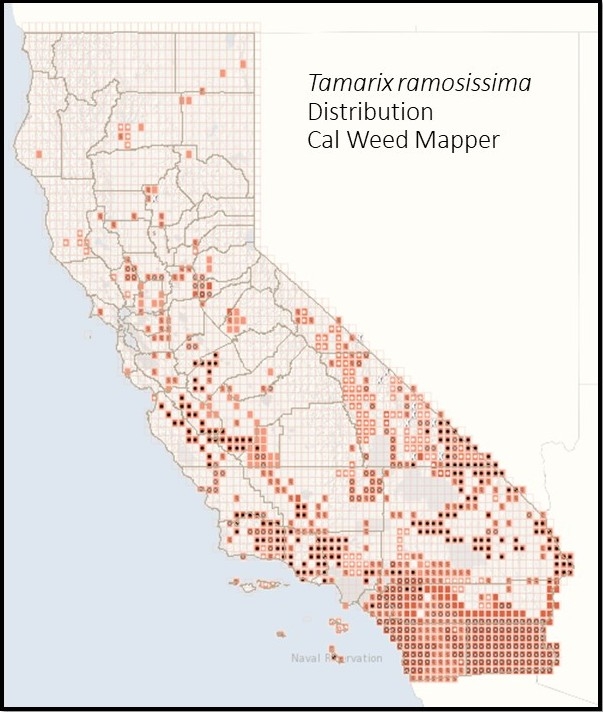
As time has passed, the beetles have continued to migrate south much faster than expected. As of 2015 they were first detected in California. There are populations of both the endangered bird and tamarisk in portions of our state here in California. There is a multistate monitoring program tracking the beetle's movements from year to year. The major concern is that beetles may be too effective at defoliating and damaging the tamarisk in areas key to the willow flycatcher's habitat. If all of the tamarisk is defoliated, and there is no other riparian vegetation present, this could be detrimental to the wildlife which have come to depend on the tamarisk, including the flycatcher.
Much more information can be found on this topic at:
2016 USGS Willow Flycatcher Article
2014 USFS Tamarisk Management Field Guide
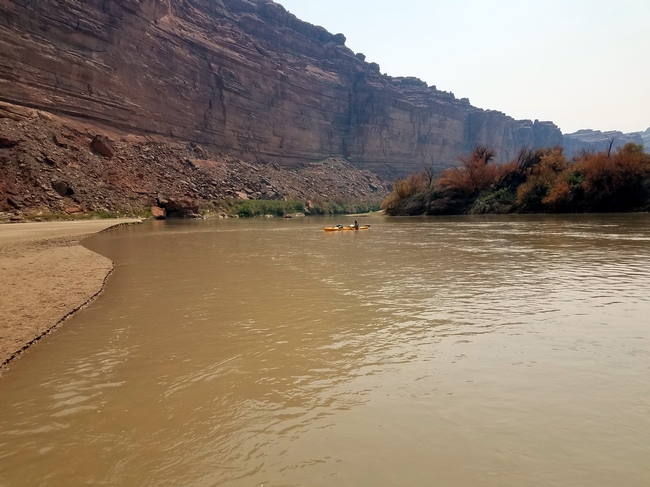
I am not sure if this is a biocontrol success story or disaster, and I think it depends on the lens we observe it through. In one sense the tamarisk beetle has been working in overdrive, exceeding expectations and having a dramatic impact on the invasive tree species throughout much of the western United States. (Brown and dead tamarisk trees are what caught my weed science eye and sparked my curiosity!) On the other hand, the impacts rapid removal of tamarisk will have on native flora and fauna is still up in the air. In the short-term, these beetles may decrease wildlife habitat specifically for an endangered bird. In the long term, reducing the competitive advantage tamarisk had over the native woody vegetation could allow for a rebound of a multitude of the native species. Either way it will be interesting to see how this saga of beetles, bushes, and birds plays out!
Additional websites I pursed when writing this blog:
Forest Service Fire Information Systems
